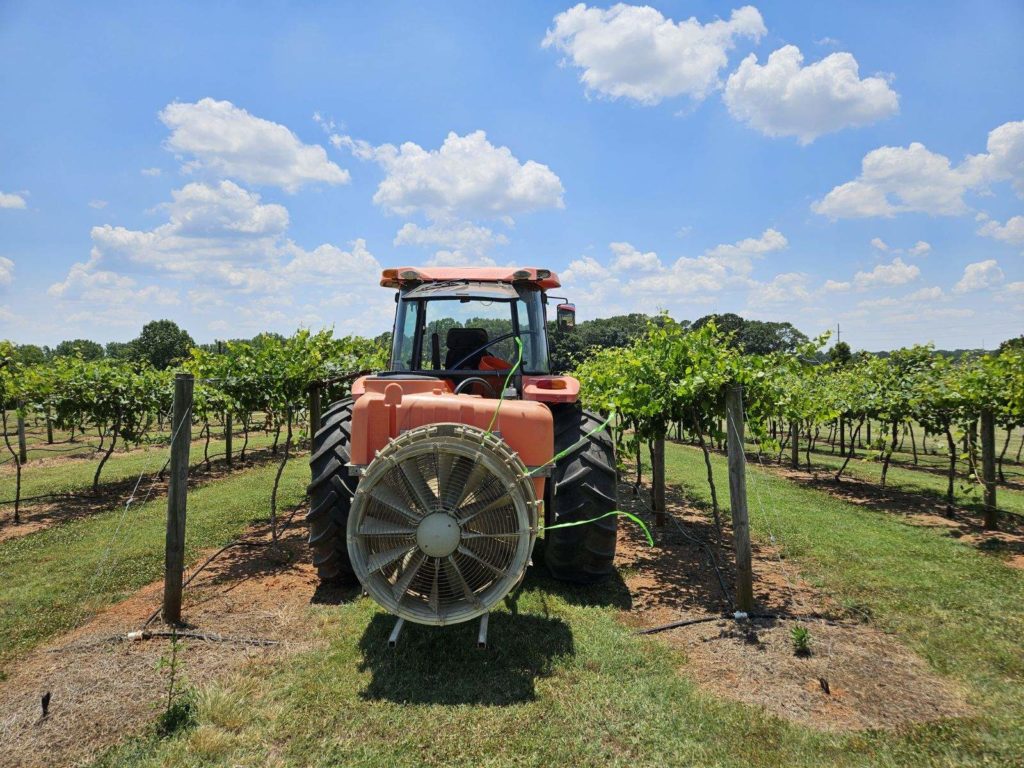
By Clint Thompson
Sprayer management is an essential part of disease management for grape producers in the Southeast. As costly as fungicides can be, growers must be as efficient as possible with their spray applications, says Sarah Lowder, University of Georgia viticulture Extension specialist.

“You can’t get good disease management if you don’t have good spray coverage,” Lowder said. “Where is your product getting in your canopy? Is it getting in places it shouldn’t be? If you’ve got nozzles turned on that are spraying directly up in the air and not at the canopy at all; that’s a good time to make sure nozzles are aiming where you want them to go.
“It’s also something that’s really easy to miss if you’re not paying attention to it. It’s a lot of little nit-picky things that make it complicated but also something you’ve got to refresh your mind on regularly to make sure you’re controlling what you think you are controlling.”
Not Just the Southeast
Unfortunately, a lack of proper planning before applying fungicides is not isolated to growers in Georgia and Alabama. Lowder said it’s common practice across the country.
“Nozzles are turned on incorrectly or they’re clogged because growers haven’t rinsed out the discs in a long time or replaced in a long time, so they’re not spraying what they think they’re spraying. A lot of times, especially when you’re out on a hot day, you can be trying to get through that (practice) as fast as possible; if you’re driving too fast, you’re also reducing the volume that you’re spraying,” Lowder said. “It’s a very common practice and something that be easily overlooked. Especially when people are putting all of this money into disease management, it’s also good to make sure that what you’re doing is actually doing what you think it’s doing.”










